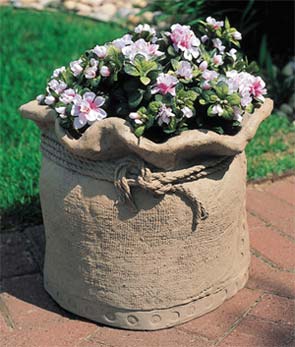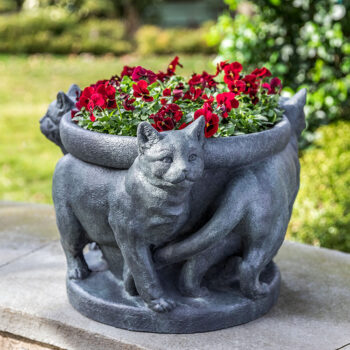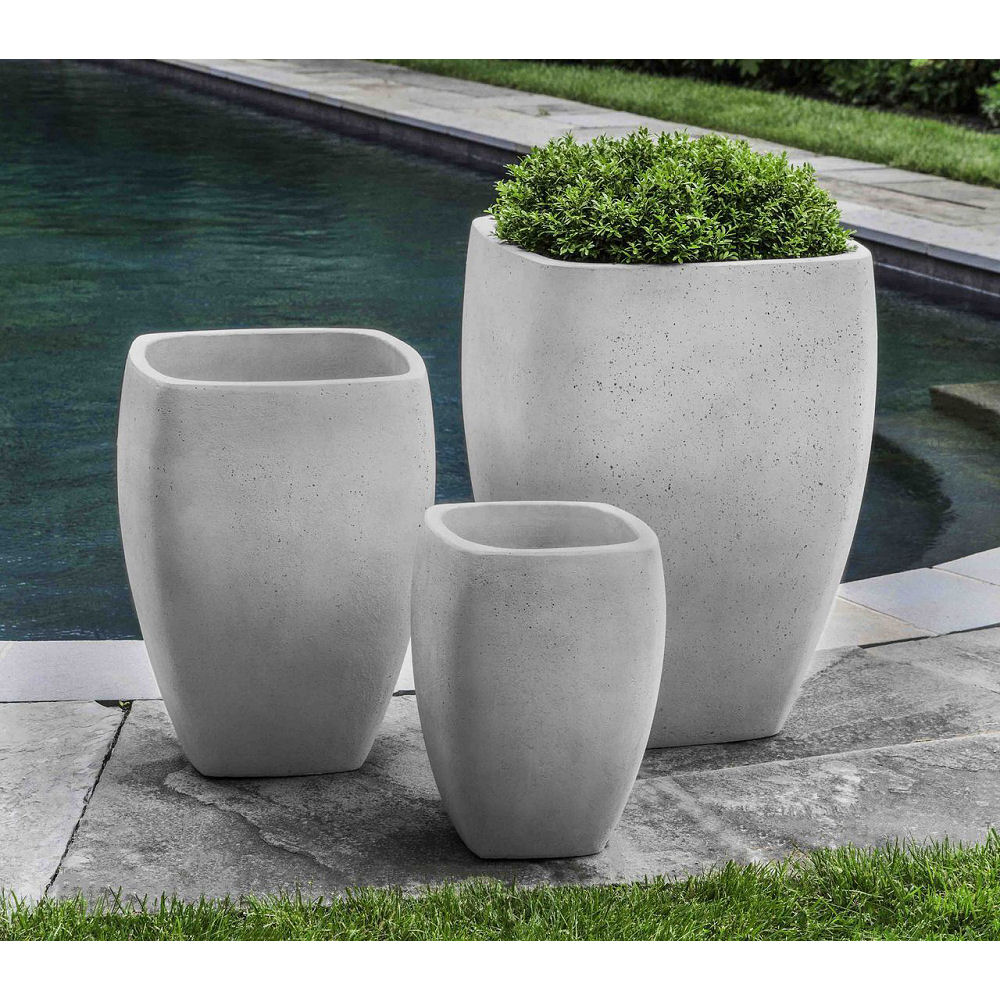When it comes to enhancing our living spaces, decorative cement planters offer a unique blend of style and functionality. In my journey of creating a serene home garden, I found that these planters not only elevated the aesthetic of my space but also provided durability that outlasted many other materials. If you’re considering adding a touch of greenery to your home or garden, decorative cement planters should definitely be on your radar. In this article, we’ll explore everything you need to know about them—types, benefits, care, and much more!
What Are Decorative Cement Planters?
Decorative cement planters are pots made primarily from cement, designed to hold plants while adding décor to your indoor or outdoor spaces. Available in various shapes, sizes, and finishes, these planters can suit any style—from modern minimalism to rustic charm.
Types of Decorative Cement Planters
There are several types of decorative cement planters, each suited for different plant types and aesthetic preferences.
1. Traditional Cement Planters
These are the classic cement pots that usually feature a rough texture. They are often unpainted and provide a natural, earthy feel.
2. Colored and Painted Cement Planters
Adding a coat of paint or using colored cement can transform the ordinary into extraordinary. These planters can match your home decor or stand out as a statement piece.

3. Textured Cement Planters
Planters with textures—like geometric patterns or intricate designs—can add depth and interest to your plant display.
4. Hanging Cement Planters
For those short on space, hanging planters provide a creative solution. These planters can be suspended from walls or ceilings, creating a stylish vertical garden effect.

5. Succulent Cement Planters
These planters are specifically designed for smaller plants, particularly succulents. They often have drainage holes and a more shallow base.
The Benefits of Decorative Cement Planters
Before diving deeper, let’s discuss why decorative cement planters are an excellent choice for your home and garden.

Durability
Cement planters are robust and can withstand harsh weather conditions, making them perfect for outdoor use. Unlike plastic or ceramic, they don’t crack easily under different temperatures.
Versatility in Design
Whether you’re going for a chic, modern look or a rustic theme, cement planters can easily adapt. Their neutral color palette allows them to blend into any decor style.

Eco-Friendly Options
Many decorative cement planters are made from recycled materials, making them an environmentally friendly choice. Choosing them can reduce your carbon footprint.
Excellent Drainage
The porous nature of cement allows for excellent drainage, preventing over-watering and root rot, which is a common issue with container gardening.

Weight Stability
Due to their weight, cement planters are less likely to tip over in high winds, thus providing stability for your plants.
Choosing the Right Decorative Cement Planter for Your Needs
Selecting the right planter can make all the difference in your gardening experience. Here are some factors to consider:

1. Size
Choose a planter that fits the size of your plant and the space where you intend to place it. A good rule of thumb is that the planter should be one size larger than the plant’s current pot.
2. Design
Consider your home’s aesthetic. Do you prefer sleek, modern pots or something more ornate? The design of your planter should complement your decor.

3. Drainage
Ensuring the planter has drainage holes is crucial for the health of your plants. If it doesn’t, you can always drill some yourself!
4. Weight
While cement planters are generally heavy, consider whether you want them to be movable or stay fixed in place.
How to Care for Your Decorative Cement Planters
Taking care of your cement planters is essential to ensure they last for years. Here are some tips from my personal experience:
Cleaning
Regularly clean your planters to remove any dirt and algae buildup. Use a brush and mild soap, but avoid harsh chemicals that could damage the finish.
Sealing
Applying a sealant can help protect the surface of your cement planters from moisture and staining. I did this with my outdoor planters, and it helped maintain their look for longer.
Winter Care
If you live in a region with freezing temperatures, consider bringing your planters indoors or covering them to prevent cracking. I’ve learned the hard way that freezing can be particularly damaging!
Comparison Table: Decorative Cement Planters vs. Other Planter Materials
| Feature | Cement Planters | Plastic Planters | Ceramic Planters |
|---|---|---|---|
| Durability | High | Medium | Medium |
| Weight | Heavy | Light | Medium to Heavy |
| Drainage | Excellent | Poor to Good (depends on design) | Good (if drainage holes are present) |
| Customization | High | Medium | High |
| Cost | Medium to High | Low | Medium to High |
Pros and Cons of Decorative Cement Planters
Pros
- Durable and long-lasting
- Versatile design options
- Great drainage capabilities
- Stable and secure for outdoor use
- Eco-friendly choices available
Cons
- Can be heavy and difficult to move
- May crack if not properly cared for in extreme weather
- Initial cost may be higher than other materials
Personal Experience: My Journey with Decorative Cement Planters
When I first started my gardening adventure, I didn’t consider decorative cement planters at all. I opted for lightweight plastic pots thinking they would be easy to manage. However, I quickly faced several hurdles—plants tipping over in the wind, pots fading in the sun, and even issues with overwatering. That’s when I decided to invest in a few decorative cement planters.
From the moment I set them in my garden, I noticed a change. Not only did they anchor my plants solidly, but their aesthetic added an entirely new layer to my outdoor space. I love how they blend seamlessly with both my green plants and the rustic wooden elements of my garden. Whether it’s a chic arrangement of succulents or a grand display of vibrant petunias, my cement planters have become the focal point of my gardening efforts.
FAQs About Decorative Cement Planters
Q: Can I use decorative cement planters indoors?
A: Absolutely! Decorative cement planters are perfect for indoor use, offering a stylish way to display houseplants. Just remember to choose a size that fits your space.
Q: How do I prevent my cement planters from cracking in winter?
A: To prevent cracking, consider bringing your planters indoors during freezing temperatures or applying a protective sealant. Keeping the plants hydrated can also help as moist cement withstands cold better.
Q: Are there drainage solutions for cement planters without holes?
A: If your cement planter lacks drainage holes, consider using a layer of gravel at the bottom to promote drainage. Alternatively, you can create holes yourself using a drill.
Q: How can I customize my cement planters?
A: You can customize cement planters by painting them, adding decorative elements, or using stencils to create patterns. The possibilities are endless!
Conclusion: Elevate Your Greenery with Decorative Cement Planters
Decorative cement planters offer more than just a home for your plants; they are a canvas for your creativity and a durable companion in your gardening journey. Whether you are looking to enhance your indoor space or create an inviting outdoor environment, these planters can elevate your greenery with style. With a little care and creativity, they can become a cherished element in your home.
So, are you ready to take the plunge and add some decorative cement planters to your collection? Share your experiences and favorite styles in the comments below!